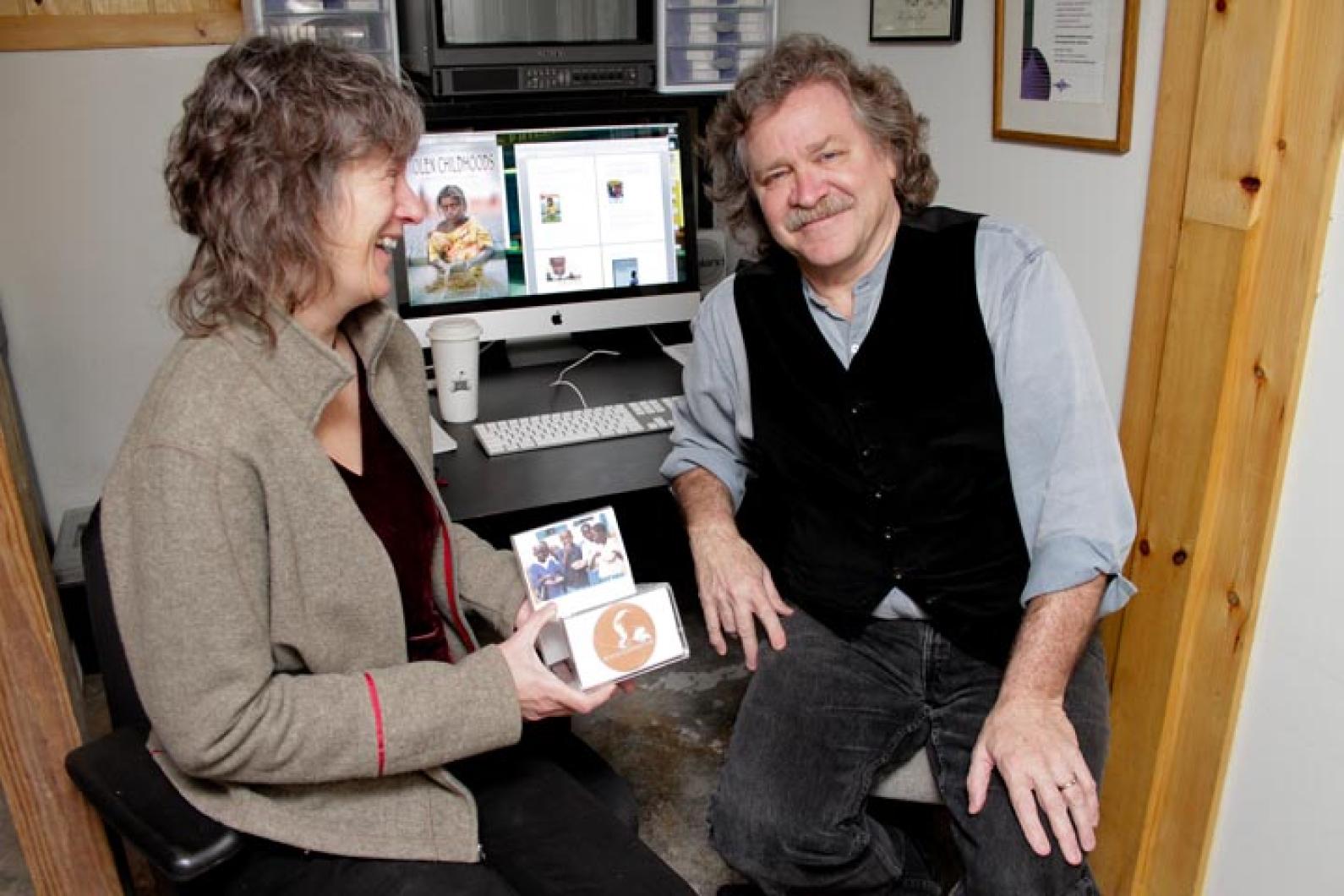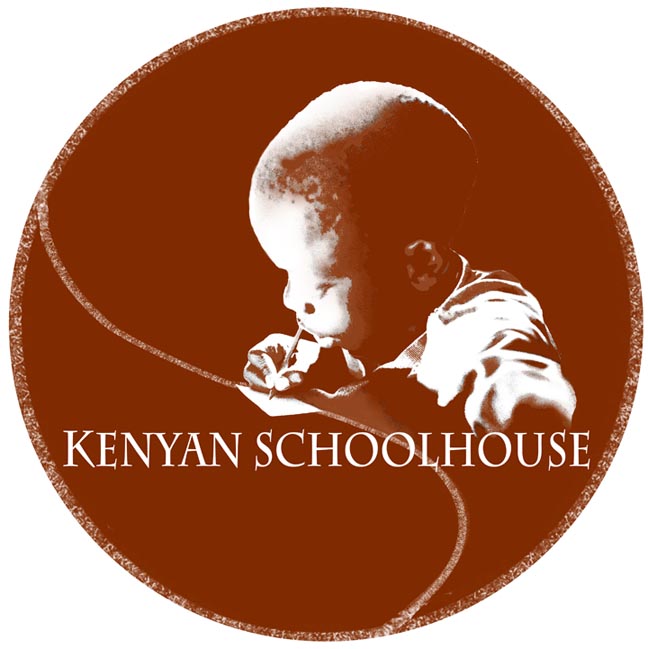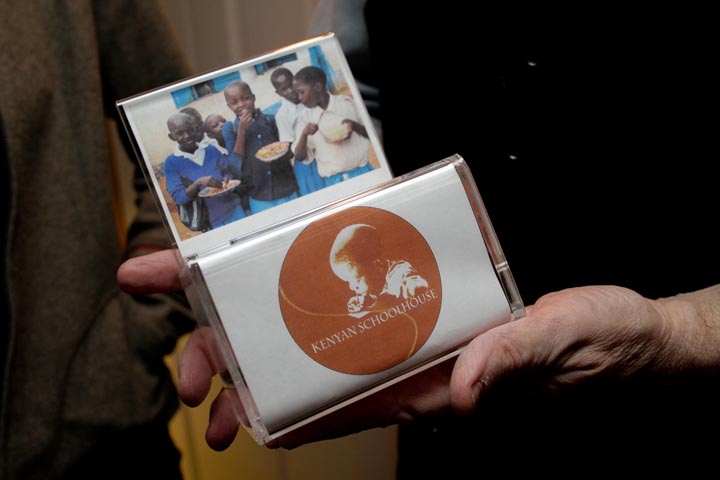Last month documentary filmmaker Len Morris of Vineyard Haven accepted the 2012 Iqbal Masih Award for the Elimination of Child Labor from the U.S. Department of Labor at a ceremony in Washington D.C. But Mr. Morris does not have the luxury of basking in the afterglow of the award ceremony. His Kenyan Schoolhouse program, now in its tenth year, is currently putting 34 former child laborers and street children through secondary school, thanks mainly to Island donations, and on Thursday morning this week he got the bill for the latest semester: $4,125, due May 1.
Mr. Morris came to the cause of ending child labor unexpectedly, after a career as a filmmaker covering subjects as diverse as singing cowboys, Jewish history, and Dizzie Gillespie. In 1998 he was assigned to document child labor conditions for a congressional report on the country’s trade partners.
“It was a job,” he said in an interview Tuesday at his Vineyard Haven home. “Then when I got there and started to see what we were talking about it shocked me. I just had no idea it was going to be so intense, so overwhelming.”
Work filming in Kenya, Brazil, Indonesia, India, Nepal, Mexico and the United States led to two documentaries, Stolen Childhoods and Rescuing Emmanuel. A third film about the role of global financial and governmental organizations in redressing the abuses of child labor, The Same Heart, is due out this fall.
The Kenyan Schoolhouse project began in 2002, when Mr. Morris and his crew, which includes his wife and filmmaking partner, Georgia, encountered pesticide-coated children, some as young as nine, on a plantation picking coffee in Kenya. Much of that coffee would end up in the supply chain of familiar multinational corporations. Unsurprisingly, documenting the plight of underage laborers has proven to be fraught with hazard.
“I’m just a normal schmo,” Mr. Morris said laughing. “If I go to a park and the sign says ‘No dogs,’ I’ll put my dog back in the car and go to another park. So being chased off places where children are being exploited by people who want to inflict physical harm on you is not fun, and it’s not something you want to be doing in your 50s, running like you’re 10 years old. And there was a good bit of that because you’re not welcome at these places. The welcome mat is not out.”
When filming ended in Kenya Mr. Morris and his crew found they could not sever the ties to their subjects with the customary dispassion of a documentary crew. Instead, they became part of the story. At the time primary school enrollment cost $50 a year, a figure that made education out of reach for half the country’s population.
“We got to know these kids and we got to like them,” he said. “On the last day when we knew we were leaving, I looked around this village and there were 30 kids and I went, hmmm, 30 kids, 50 bucks apiece. Hey guys, how much money you have? In my mind it was like they’re hungry, they’re covered in pesticides, they shouldn’t be here, they shouldn’t be doing this. This sucks. Fifteen hundred dollars will make it unsuck.”
When they got back to the States the film crew realized it had made a commitment to the children’s education. In the 10 years since, the Kenyan Schoolhouse program, and by extension the Vineyard, has put more than 400 children through school. Donation boxes for the program dot the counters of Island businesses such as Tony’s Market, Jim’s Market, Cronig’s Market, Alley’s General Store, Larsen’s Fish Market, Island Entertainment, Morning Glory Farm, 7a Foods, Tisbury Farm Market and hopefully more stores in the near future.
In his most recent visit to Kenya in September Mr. Morris met four of the young men who had received an education thanks to the good will of an Island a world away. One of them was working on the coffee plantation during that formative visit in 2002.
“You don’t remember me, but I remember the first day you came to the plantation,” the young man said. “I was picking coffee. I was 10 years old.”
“It was touching and it was deeply moving and it was awesome,” Mr. Morris said of the experience. “It was fabulous.”
Students in the program have earned scholarships to attend college for engineering, architecture and chemistry.
“This proves that poverty isn’t a final destination for these kids,” he said. “You’re not stupid just because you’re born poor. One of the children currently enrolled in the Masai area, William Muto, the headmaster describes as the most brilliant and talented child he’s ever seen in his career as an educator.”
While the vicissitudes of the global financial system have been acutely felt in the developing world, Mr. Morris and his co-producer, Petra Lent McCarron, say the toolkit for social entrepreneurs to bring about change has been greatly expanded in the past decade, pointing to the success of campaigns like the KONY 2012 online video viewed by over 100 million people.
“I think it’s amazing,” Mr. Morris said. “I think it’s terrific. I can understand stepping back and saying, are we really going to have our foreign policy influenced by social networking? It raises some really interesting questions, but the genie’s out of the bottle.”
In 2008 Mr. Morris launched Media Voices for Children, a Web site billed as the “Huffington Post for children’s issues,” that aggregates the work of over 120 organizations and activists on child labor issues. While he has plenty of statistics at the ready to discourage even the most optimistic Pollyanna — there are 220 million child laborers in the world, 2.5 million children with HIV, a half billion people go to bed hungry at night — Mr. Morris believes one should never lose sight of individual lives.
“This matters,” he said. “It matters to these children. They will change the lives of other children in their communities, they will be role models within their families. They will change things in concentric circles around them. They are, in very real terms, lives saved.”
To donate to the Kenyon Schoolhouse project, go to kenyonschoolhouse.org.










Comments
Comment policy »